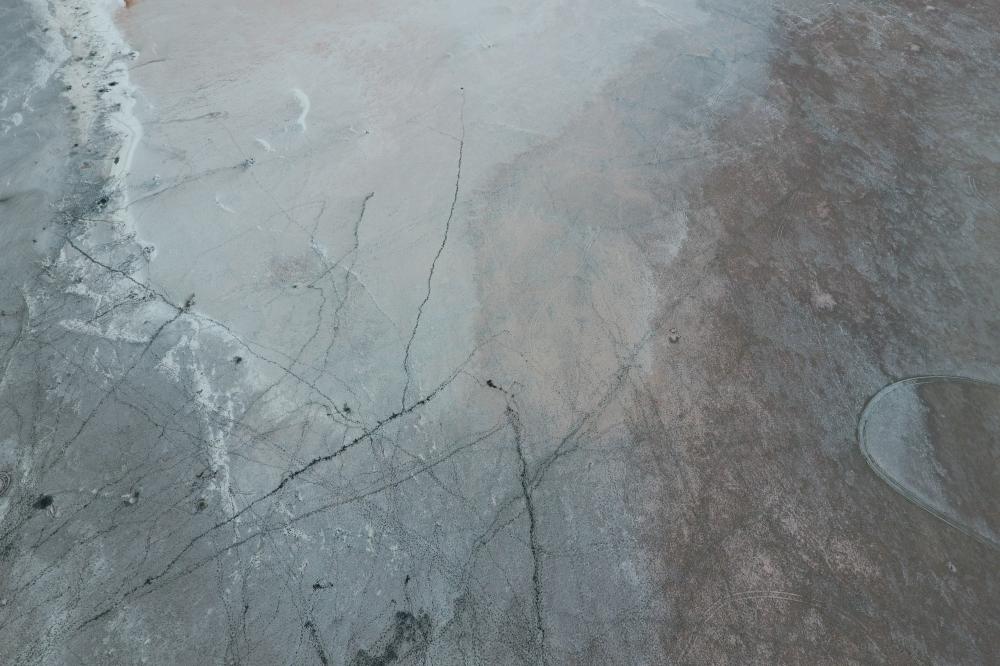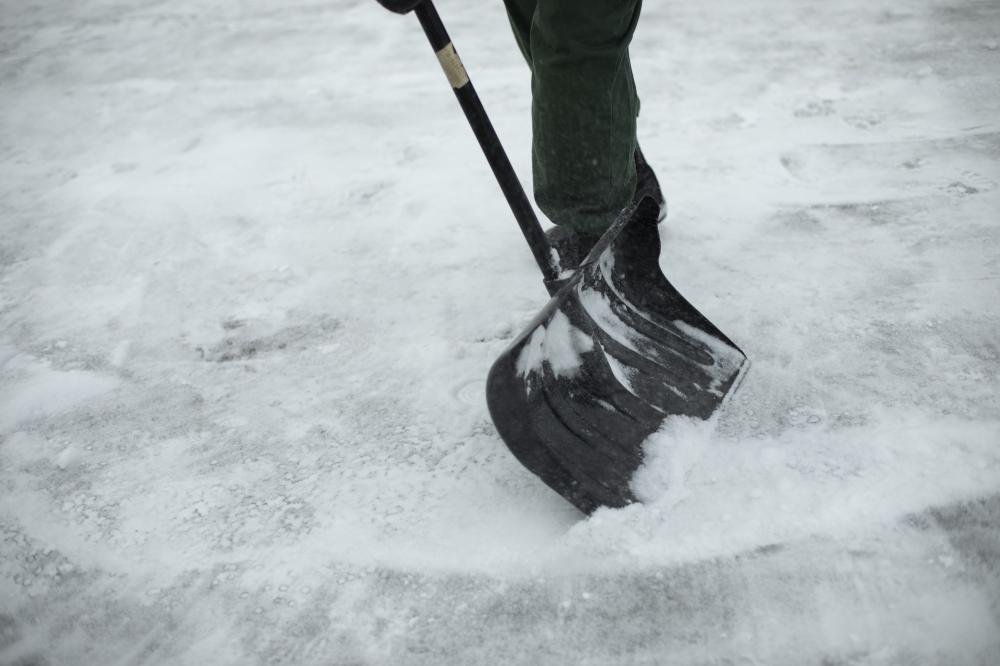Concrete Safe Ice Melt

Introduction to Concrete Safe Ice Melt
As we continue our mission at Tellus Tru, we're constantly on the lookout for ways to solve problems with solutions that are both effective and conscientious. One such challenge that frequently arises during the winter months is finding an ice melt product that is not only efficient at banishing ice but also safe for concrete surfaces, the environment, our pets, and us. Concrete safe ice melt is a topic worth exploring given the potential harm traditional products can pose to various aspects of our daily lives and surroundings.
Understanding Ice Melt Products
The Chemistry Behind Ice Melt
At its core, the principle behind ice melt products involves lowering the freezing point of water. This action prevents ice from forming and breaks up existing ice formations. However, not all products perform this task with the same level of safety concerning concrete integrity, environmental impact, and pet health.
Diverse Types of Ice Melt
Different ingredients in ice melt products yield varying degrees of effectiveness and safety. Traditional options like sodium chloride, while cost-effective, pose significant risks to concrete surfaces and environmental health. It's this understanding that drives our exploration for safer alternatives.
Finding Concrete Safe Solutions
Exploring Safer Alternatives
In our journey to redefine solutions, we've discovered several types of ice melt that promise reduced harm to concrete and living beings. These include calcium chloride, magnesium chloride, and calcium magnesium acetate. Each of these has its own set of advantages and temperature thresholds at which they are effective.
Our Approach to Safety
We believe in not just finding but also creating solutions that align with our values. In our internal projects, we scrutinize each potential concrete safe ice melt for its environmental impact, pet safety, and effectiveness. This holistic approach ensures that our recommendations and products contribute positively across all fronts.
Best Practices for Application
Even the safest ice melt product requires thoughtful application to maximize its benefits while minimizing any negative consequences. This involves spreading the product evenly and resisting the urge to over-apply, as more isn't always better. It's also essential to consider the timing of application and physical removal of snow and ice where possible to reduce the need for chemical intervention.
Considering the Environmental Impact
Our commitment extends beyond immediate safety concerns to the broader environmental impact of the products we endorse. Each ingredient in a concrete safe ice melt can have ramifications for local flora and fauna, water quality, and overall ecological balance. By favoring products with minimal adverse effects, we aim to protect our planet for future generations.
Prioritizing Pet and Child Safety
The well-being of our furry friends and little ones holds a special place in our considerations. Many traditional ice melt products can irritate their paws and skin or prove toxic if ingested. Identifying and promoting products that pose no such risks is a critical aspect of our mission, ensuring that safety is an all-encompassing term.
Tangible Benefits of Choosing Wisely
Opting for a concrete safe ice melt comes with a host of benefits, from preserving the structural integrity of our pathways and driveways to safeguarding the health of our pets and the environment. Moreover, by choosing products aligned with our values, we contribute to a demand that encourages innovation and the development of even safer, more effective solutions.
Looking Ahead: Future Innovations
The quest for the ideal concrete safe ice melt is ongoing. As we advance, we remain open to new discoveries and technologies that promise to further refine the balance between efficacy and safety. Our dedication to this cause is unwavering, driven by our commitment to consciousness, integrity, and the well-being of you, our community.
Conclusion: Embracing Safer Alternatives
In conclusion, the journey towards finding and utilizing concrete safe ice melt is emblematic of our broader mission at Tellus Tru. By approaching challenges with an innovative spirit, dedication to safety, and a commitment to environmental responsibility, we continue to seek and create solutions that not only solve problems but do so in a way that benefits everyone involved. Choosing a concrete safe ice melt is a simple yet profound way of embodying our values, demonstrating that thoughtful choices can lead to significant positive impacts.
- Spread ice melt evenly and sparingly to prevent overuse and potential damage.
- Select ice melt products wisely, considering their environmental impact, safety for pets and children, and effectiveness at various temperatures.
- Stay informed about new and innovative products that offer increased safety and effectiveness.
Through education, conscientious choice-making, and a commitment to innovation, we can all contribute to a safer, healthier winter environment for our communities and the planet.

Which ice melt is safe for concrete?
When it comes to protecting concrete during the icy months, calcium chloride stands out as a preferred choice. Its ability to lower the freezing point of water without causing the excessive expansion associated with sodium chloride makes it a safer option for concrete surfaces. From my experience, calcium chloride not only efficiently tackles ice but does so with minimal harm to the concrete, thereby extending the lifespan of driveways and walkways. It's a good practice to look for products that specify they are concrete-safe and to test them in a small area if you're trying a new brand.
What will melt ice but not damage concrete?
Magnesium chloride is another go-to product for those looking to melt ice without damaging concrete. With a lower environmental impact than many traditional ice melters and the ability to work at temperatures as low as -13°F, it provides an effective solution without compromising the integrity of concrete surfaces. I've found that magnesium chloride is especially beneficial in areas with heavy pedestrian traffic, as it is less corrosive on metal surfaces and safer for pets' paws, making it an all-around conscientious choice for ice removal.
What salt does not damage concrete?
Interestingly, when discussing salts, calcium magnesium acetate (CMA) emerges as a superior choice for those concerned with concrete safety. Unlike more corrosive salts, CMA acts as a de-icer without aggressively attacking concrete or metal surfaces. It's a product born from the need for a more environmentally friendly and infrastructure-conscious solution. In my engagements across various landscapes, CMA has proven to be effective while also being considerate of our pets and the area's ecosystem. It represents a shift towards more sustainable winter maintenance practices.
Is blue salt safe for concrete?
Blue salt, often marketed for its visible tracking and enhanced ice-melting capabilities, typically contains a blend of sodium chloride and a coloring agent. While its vivid color can help in ensuring even application, it's important to understand that the safety for concrete largely depends on its primary chemical constituents. If the blue salt is primarily sodium chloride, then the same concerns regarding concrete damage apply. However, there are blue-colored products infused with calcium chloride or magnesium chloride, which are safer for concrete. Always check the product's ingredients to ensure compatibility with your concrete surfaces.
How to apply ice melt effectively without harming your concrete?
Applying ice melt in a manner that ensures effectiveness while minimizing harm to concrete involves several key steps. First, always start with a pre-application of the product before the snow begins to fall. This preemptive measure helps prevent ice from bonding to the surface. When applying, use a spreader to ensure an even distribution, avoiding pile-ups that can lead to concrete damage. After the ice has melted, it's crucial to remove any slush or residual product to prevent refreezing and to limit the product's contact time with the concrete. By adhering to these practices, you can protect your concrete while keeping your premises safe.
Can eco-friendly ice melts really be effective?
Yes, eco-friendly ice melts can be highly effective and reflect a growing segment of products borne from the need for environmentally responsible solutions. These products typically include ingredients like calcium magnesium acetate, magnesium chloride, and beet juice blends, which offer de-icing capabilities without the harsh effects associated with traditional salts. Our experiences have shown that when used correctly, eco-friendly ice melts perform admirably, providing a safe, non-toxic method for managing ice. Moreover, they represent our commitment to practices that safeguard the environment, concrete surfaces, and the well-being of pets and children.
What are some misconceptions about ice melts and concrete damage?
One common misconception is that all ice melts inherently damage concrete. The truth is, the compatibility of ice melt products with concrete depends on their chemical composition. Another misconception is that the more ice melt you use, the better the results. In reality, over-application can lead to increased concrete damage and environmental harm. It's also mistakenly believed that new concrete is immune to salt damage. However, new concrete is actually more susceptible to damage from freeze-thaw cycles exacerbated by improper use of de-icing salts. Educating ourselves on these nuances allows for more informed, safer choices in ice management practices.
Resources
- Environmental Protection Agency (EPA) - The EPA provides valuable information on environmental impact, including guidelines for selecting environmentally friendly ice melt products.
- The Humane Society - The Humane Society offers advice on pet-friendly ice melt products and their potential dangers to animals.
- Natural Resources Defense Council (NRDC) - The NRDC advocates for the protection of the environment and provides resources on sustainable and safe ice melt alternatives.
- Purdue Extension - Purdue Extension offers guidance on selecting ice melt products that are safe for concrete surfaces and the environment.
